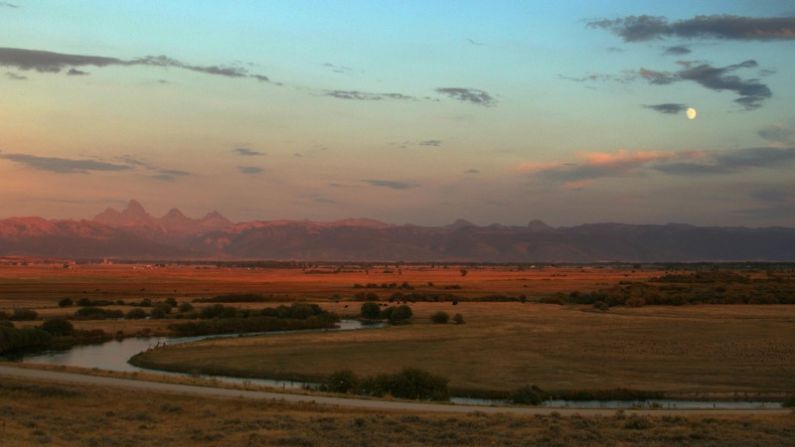SPET measures fill Teton County ballots
We’re just over a week out from the Nov. 8 general election, and there’s a lot riding on the Teton County ballot. Voters are faced with 15 ballot measures that could be funded through the Specific Purpose Excise Tax, or SPET. This is a penny of sales tax that goes toward projects such as housing or transportation.
Teton County has levied SPET measures since the ’80s, but — at over $160 million — this is the biggest ask so far.
“I think that can be looked at from the point of just a widening economic gap in the county, especially since remote workers have really flocked here since the pandemic,” said Sophia Boyd-Fliegel, the county reporter at the Jackson Hole News&Guide who’s been covering SPET initiatives.
She says SPET is a relatively popular tax, since tourists pay over half of it. And, voting for these measures doesn’t actually increase taxes.
One third of the measures are for workforce housing. Another measure would hire a consultant to look into senior housing in the county. Other projects include improving bike paths to schools and making Jackson more walkable.
“Those are kind of like the less sexy SPET measures that do have a real impact on infrastructure that a lot of people use,” Boyd-Fliegel said.
If all 15 measures pass, conservative estimates show it could take up to eight years to fund all the projects. But, if sales tax revenue continues to increase like it has in the last few years, completion could come a lot sooner.
Federal government sues Driggs for dumping toxic waste into healthy stream
This story comes from Caitlin Tan through a content-sharing relationship with Wyoming Public Radio.
Driggs, Idaho is being sued by the federal government for dumping toxic waste into a nearby stream.
According to the Associated Press, the U.S. Department of Justice filed the lawsuit Monday, Oct. 24, claiming that the city of Driggs violated the Clean Water Act by dumping sewage water into Woods Creek, which is a tributary of the Snake and Columbia Rivers, Teton River and Henry’s Fork.
The contaminated water had high levels of e. Coli and ammonia, which are linked to killing aquatic life and causing intestinal and brain damage in humans.
The suit claimed that the illegal dumping has happened more than 2,600 times since 2015. If the lawsuit is successful, Driggs will be on the hook for more than $160 million in fines.
This is not the first time the city has been cited for unsafe water standards. According to the Associated Press, four years ago the Environmental Protection Agency mandated that Driggs update its wastewater treatment facility, which has been out of compliance for years, causing the contaminated water dumping. But, the city never followed through with the updated facility.
The city said the current lawsuit is a “procedural step” for reaching a settlement with the federal government.
“Although it seems scary to be sued by the Department of Justice, it’s actually an opportunity to receive support and resources,” Driggs Mayor August Christensen said in a written statement.
The Department of Justice, however, is asking in its lawsuit for the city to be fined and ordered to comply with federal pollution rules, including the Clean Water Act.
Wyoming, USDA Agree on Partnership to Conserve Wildlife Habitat
This story comes from Eric Galatas, with the Public News Service.
Governor Mark Gordon has signed into law a new pilot program in partnership with the U.S. Department of Agriculture that aims to support Wyoming farmers and ranchers whose operations provide wildlife habitat as elk, mule deer, pronghorn and other big game travel between their winter and summer ranges.
Lesli Allison, executive director of the Western Landowners Alliance, said the program can help ease pressure on some producers to sell off lands for development, and keep large tracts of Wyoming’s working lands intact.
“This partnership understands that we need to support what’s working,” Allison explained. “We need to support keeping the lands open that are already allowing wildlife to use them for these migration corridors.”
The program provides an increased commitment of $16 million starting next year for restoration and preservation of agricultural lands. Private landowners can voluntarily opt to tap federal dollars for a wide range of conservation moves, including replacing five-strand barbed wire with wildlife-friendly fencing.
Scott Christensen, executive director of conservation for the Greater Yellowstone Coalition, said Wyoming is home to some of the last remaining viable wildlife migrations in the lower 48 states. He emphasized that, over the last decade, the state has emerged as a leader in wildlife-corridor science and conservation.
Christensen believes the new partnership will help sustain the landscapes and ecosystems that make Wyoming special.
“Tens of thousands of elk, pronghorn and mule deer migrate across Wyoming’s lands every year, and about half of that year they spend on property owned by Wyoming’s farmers and ranchers,” Christensen noted. “This is good for wildlife, it’s good for people.”
Allison pointed to a new “habitat leasing” initiative, which allows working ranches to stay in business while also providing the critical habitat wildlife require for survival. Private landowners who choose to enroll agree to maintain quality habitat over a 10- to 15-year period in exchange for annual payments on a per-acre basis.
“For ranchers to be able to do their grazing management in a way that provides that forage for the wildlife populations, and also continue to be able to support their livestock operations,” Allison stressed. “That’s really the key.”
Support for this reporting was provided by The Pew Charitable Trusts.
Jackson real estate market still hot despite economy, few listings
The Jackson Hole real estate market continues to break records despite uncertainties in the national economy.
A report from realtors at the Jackson-based Viehman Group says the average home sale price last quarter was over $4 million. Just 28 sales were below $1 million, which is a record low.
The majority of Teton County residents make less than $60,000 a year, making buying a home here out of reach for many locals.
Sales are down because there are so few properties available. The number of listings is the second lowest in Jackson in 40 years. The Viehman Group predicts inventory will continue to decline throughout the fall and winter seasons.
Roads in Grand Teton, Yellowstone national parks to close Nov. 1
Teton Park Road will close to vehicles for the winter season on Tuesday, Nov. 1. The road will still be open to walking and biking until it is snow covered. Then, park staff will groom the road and open it for skiing and snowshoeing.
Nearly all entrances and roads in Yellowstone National Park will also be closed come Nov. 1.





